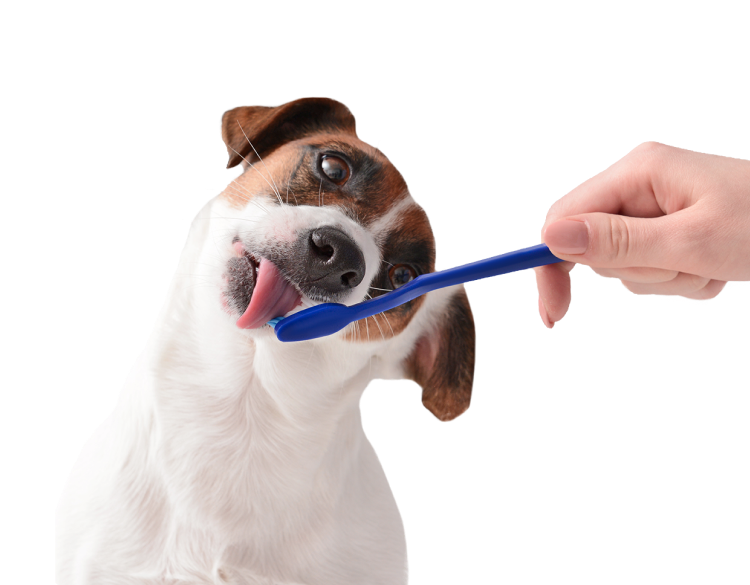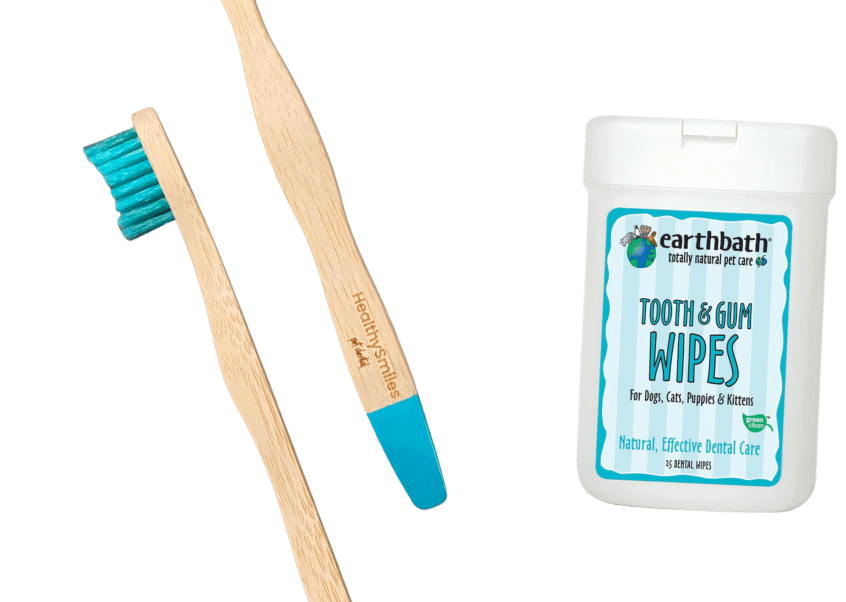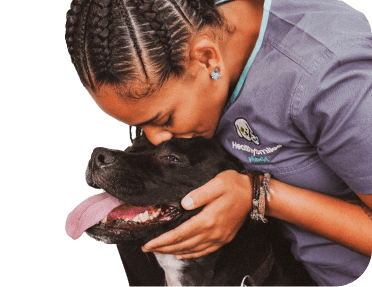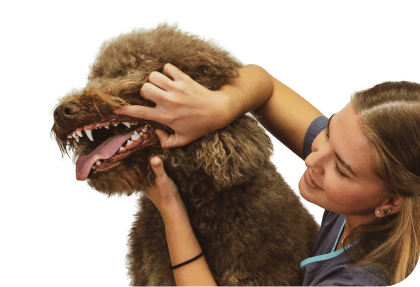What is periodontal disease in pets?
September 2, 2020Did you know that periodontitis is the most common disease in pets? Yet it often gets confused with gingivitis. Gingivitis refers to inflammation of the gingiva – which is only the earliest stages of periodontitis.
Periodontitis describes inflammation of not only the gingiva but other structures of the periodontium (the ligaments, gingiva connective tissue, and alveolar bones that form the tooth socket). Once advanced periodontitis occurs the changes are difficult to reverse!
According to Hills Pet, it’s all about bacteria in the mouth.
This type of disease affects the structures in the mouth that surround and support teeth — known as periodontal tissues. For dogs, the culprit of periodontal disease is bacteria.
What are the 12 major signs of periodontal disease in pets?
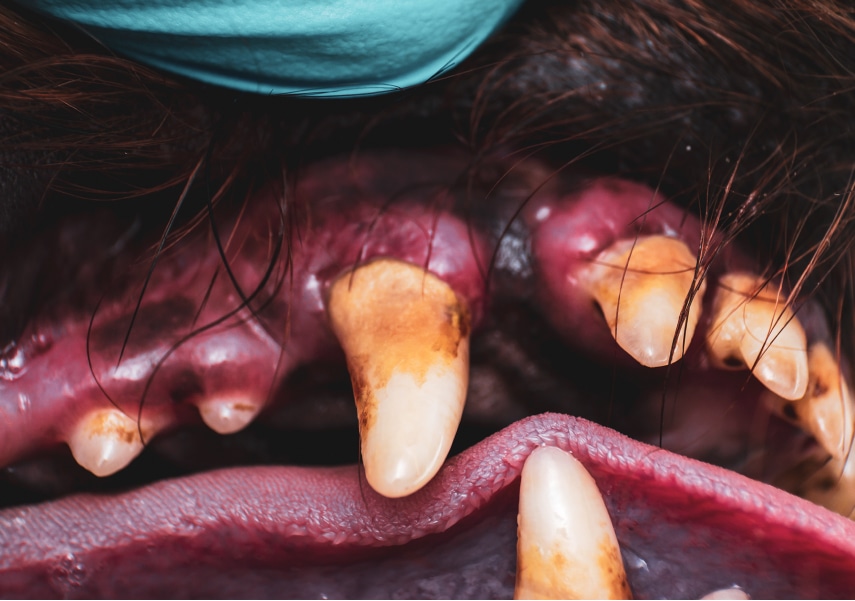
Remember: regular dental cleanings can help prevent periodontal diseases!
Our pets can be stoic and not show us they’re in pain. We have to carefully watch any behavior that may seem ‘off’ and looking in their mouth can tell us a lot!
Hills Pet tells us that some early signs also include tartar on the teeth and a line of red inflammation along the gumline. 80 percent of dogs and cats have dental disease and it’s very preventable.
Unfortunately, the first signs of periodontal disease in dogs are rarely observed by pet parents. By the time the signs are noticeable, gum disease has typically advanced and is painful for a pet.
1. Red swollen gums
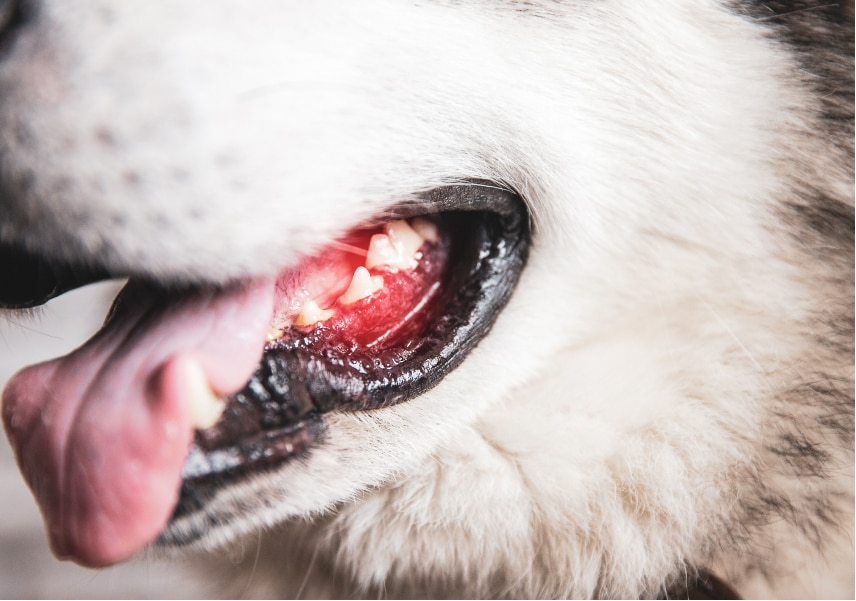
Bleeding or red gums isn’t ‘normal’ for dogs and cats. If you notice red swollen gums that’s a major indicator your dog has periodontal disease. Swollen and tender gums can also be painful for your cat or dog!
2. Bad breath

Some dogs have really bad breath! When all that tartar and plaque builds up on your animal’s teeth, the bacteria that starts to grow leads to bad breath. This is also not normal for a healthy pet.
3. Discolored teeth
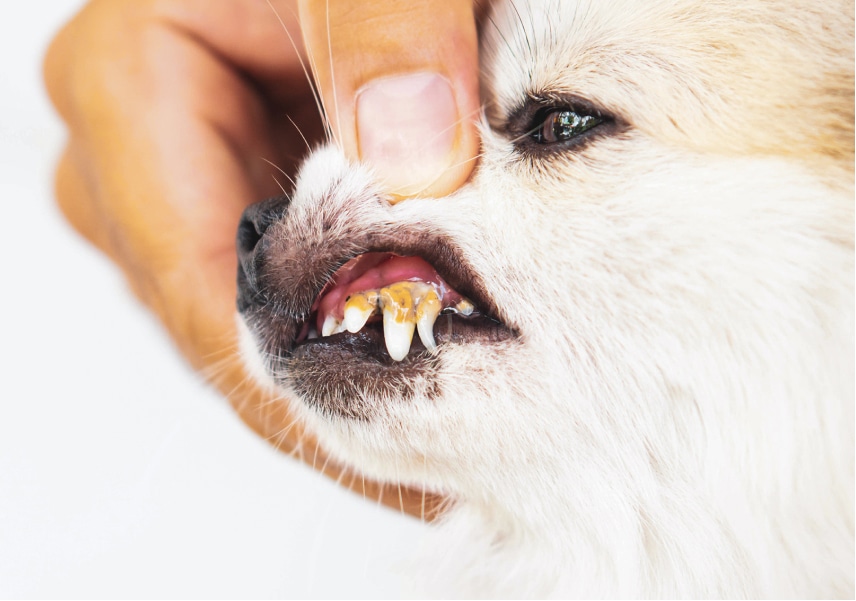
Your dog and cat should have white teeth – similar to your teeth after a dental cleaning! This can happen even with daily home care and some dogs and breeds are predisposed to tartar. If you see teeth that have yellow and brown stains that is a sign that it’s time for a dental cleaning.
4. Bleeding gums
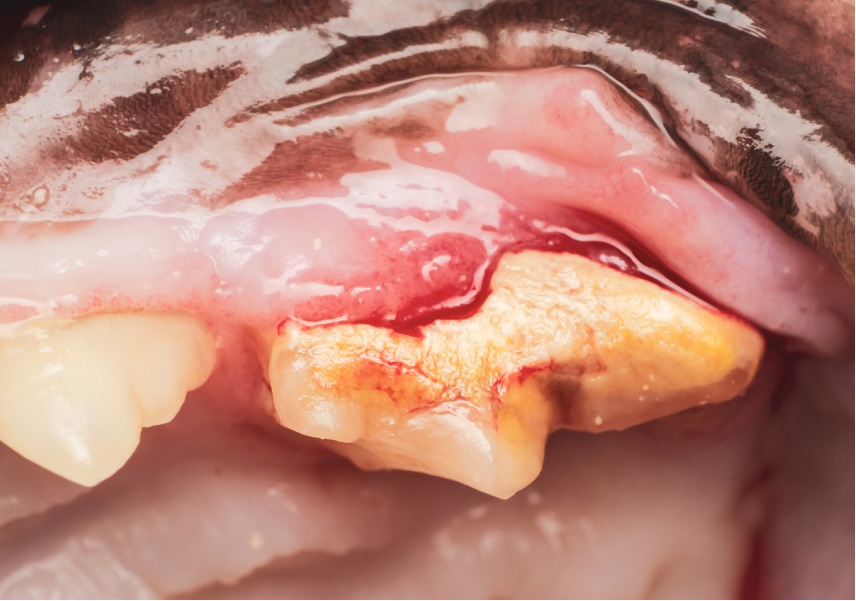
Bleeding, sore gums fall into the same category as red, swollen gums! It’s also an indication that periodontal disease has already set in. This condition will worsen if untreated.
5. Drooling
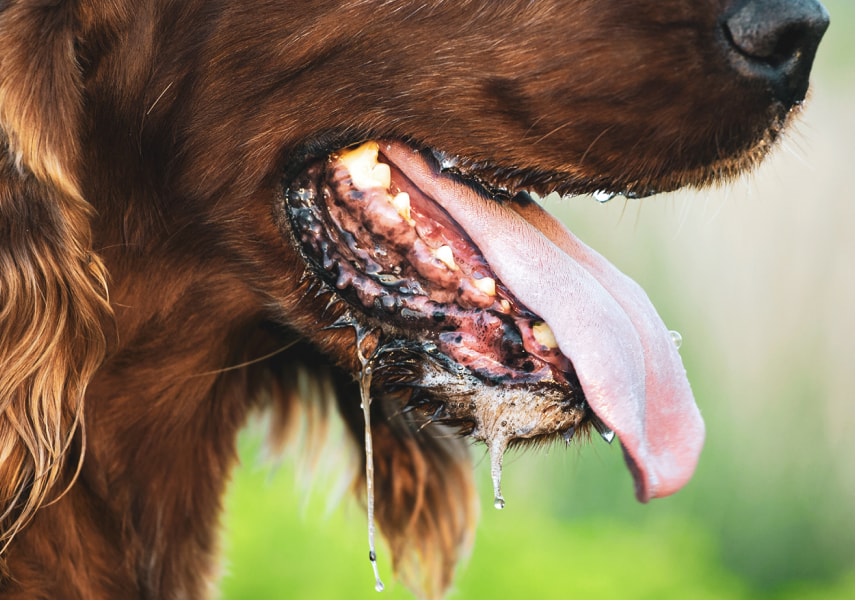
Have you ever noticed your cat is drooling after drinking water? It isn’t a ‘cute’ drool but behavior that looks like they’re very uncomfortable. Drooling can also indicate dental disease especially in cats.
6. Loose or missing teeth
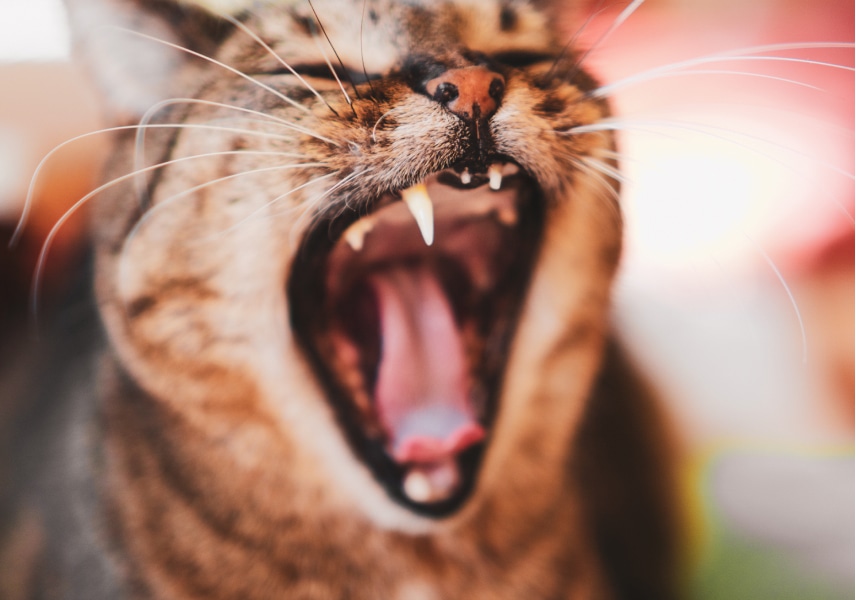
If you see a few of those small incisors move then call your vet! When dogs age sometimes they end up with some loose teeth. You’ve all seen the story about the small terrier or chihuahua that has many of their teeth removed due to poor dental care. Don’t let this be your dog or cat!
7. Inappetence in dogs
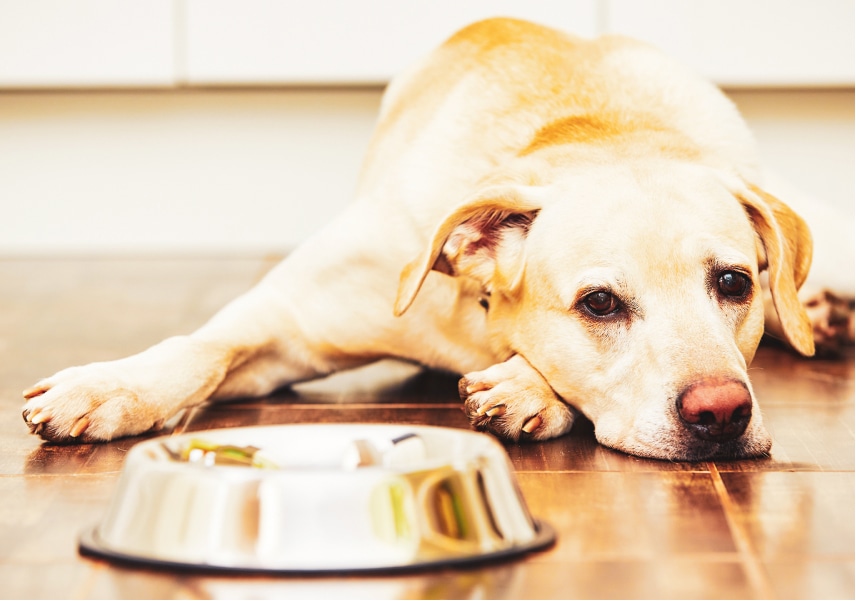
When your dog stops eating it could be due to discomfort or an illness. If they boycott meals and won’t chew on treats then that is a sign that their mouth hurts. Oral discomfort can affect their appetite.
8. Sneezing after drinking water
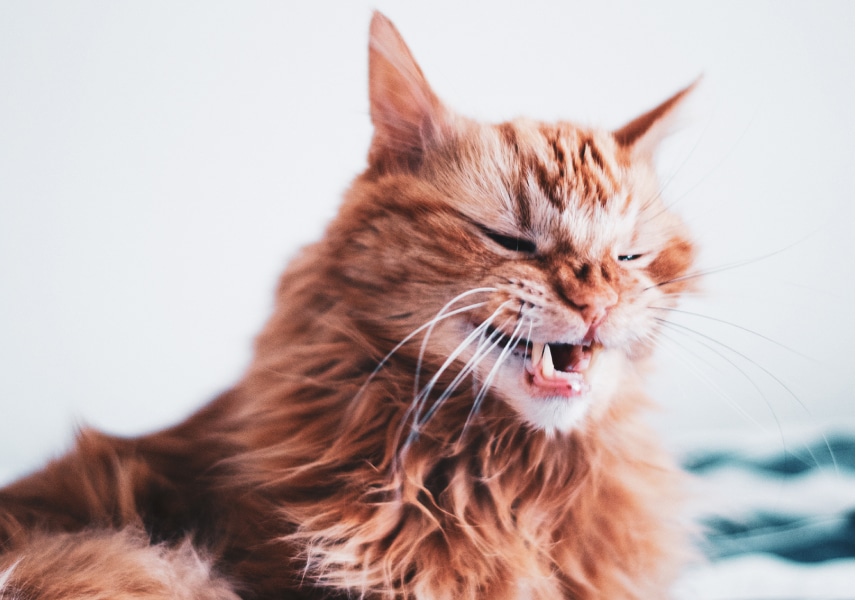
Sneezing after drinking water or eating is another possible sign your dog is having oral health issues. If you notice your cat sneezes every time they drink water then you should see the advice of your veterinarian.
9. Facial swelling
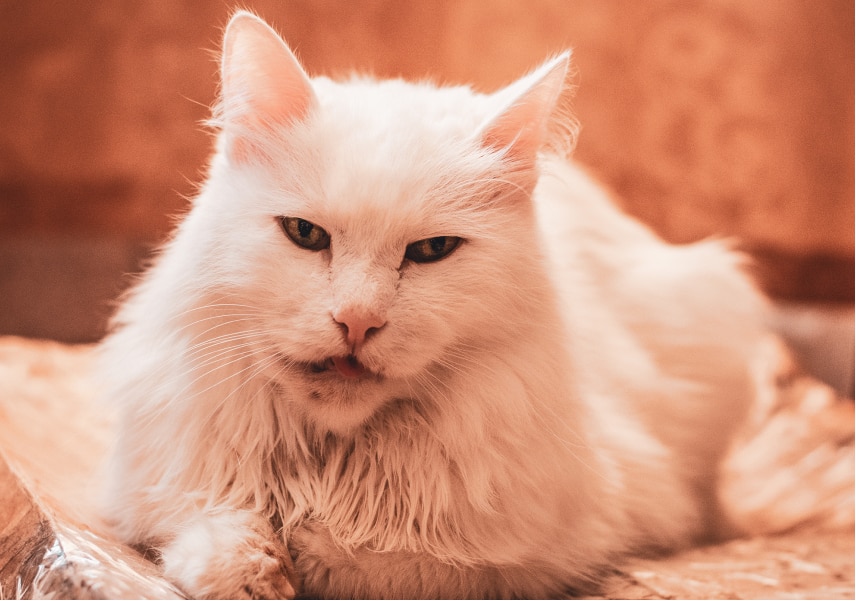
If you see swelling under the eyes or any area around the mouth then you can assume there is an infection. Many times these will lead to an abscess and a vet may even find your dog fractured their teeth.
10. Face rubbing and pawing at the mouth
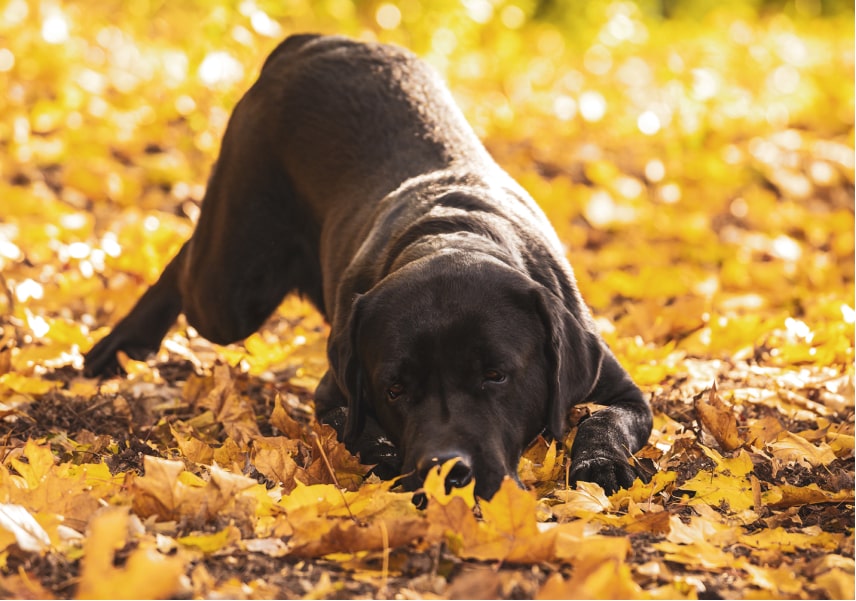
Pawing at the mouth or face rubbing is a very serious indication your dog or cat is experiencing pain. This could be due to their mouth, teeth or even an allergic reaction to something outdoors.
11. Difficulty swallowing
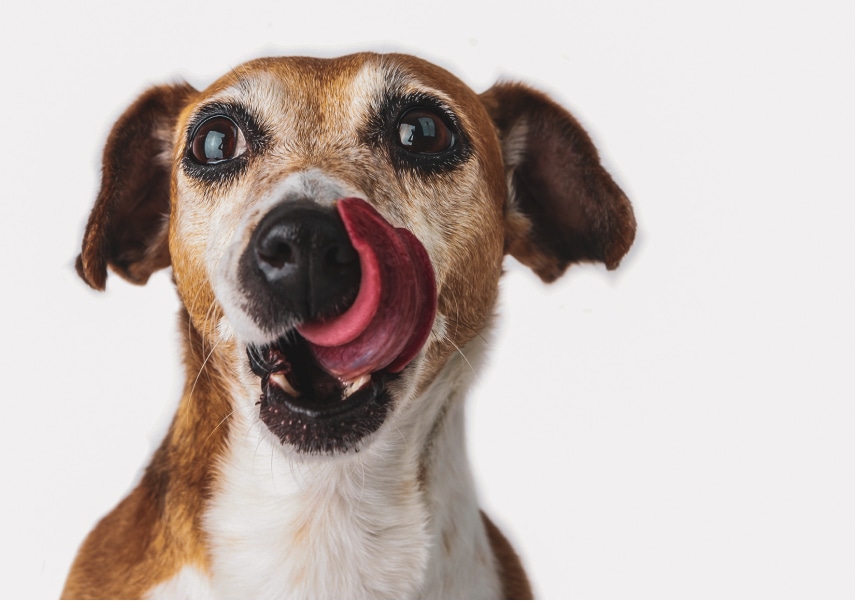
If you notice your dog is having any problem swallowing you should treat this like it’s a vet 911. Even if your pet isn’t ‘choking’ and simply having trouble swallowing a treat or their daily meal the behavior isn’t normal.
12. Cats that stop eating
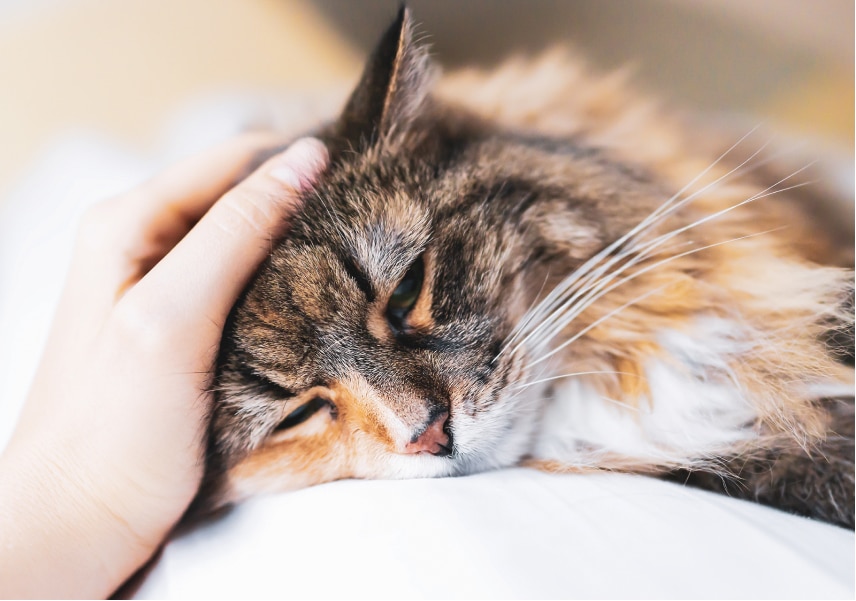
We talked about dogs. Now it’s time to address our feline friends. If your cat doesn’t want to eat from their bowl and this goes on for a day or more then this could also indicate oral pain. Cats may not like a new canned or dry food so make sure to take notes and share them with your veterinarian.
Dental health and checkups are just as important as an annual wellness exam. All pets should have their teeth examined by a veterinarian at least once a year.
If you’re interested in learning more about dental care for your dog or cat, we have a comprehensive dental care guide that walks pet parents through everything they need to know about dental disease and cleanings.
How do you prevent periodontal disease in dogs?
The goal is to prevent periodontal disease by having your dog examined by your vet at least twice a year. Their annual wellness exam should include an oral exam.
During the oral exam, it will be determined if your dog is ready for a dental cleaning. Dental cleaning procedures (non-anesthetic or anesthetic) will prevent periodontal disease and early periodontitis can be reversed so make sure you watch for the early signs above! Some animals will only need dental cleanings every few years and others may need them more often. Some animals are predisposed to having bacteria build-up in their mouth.
Non-anesthetic dental cleanings are as effective as anesthetic dental cleanings for routine and preventive cleanings.
Hills Pet also tells us that if your vet suspects advanced periodontal disease they’ll recommend your dog undergo a dental cleaning and an X-ray under general anesthesia to fully assess their oral health.
The texture of the diet, toys, and treats can affect the self-cleansing mechanisms of the teeth.
How do you treat periodontal disease in dogs?
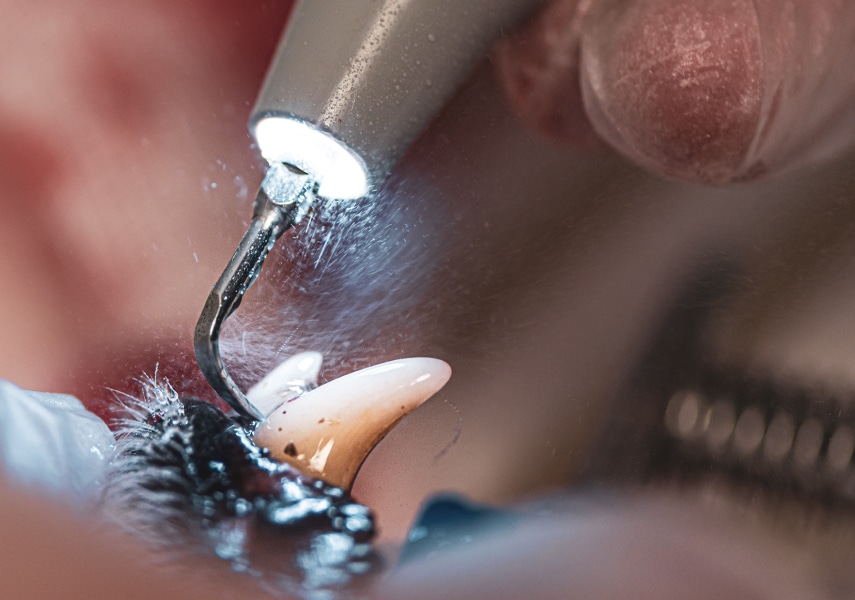
For patients with periodontal disease, the treatment goal is the removal of plaque and calculus from the teeth. General anesthesia is necessary to provide access to the subgingival areas, where bacteria can contribute to local and sometimes systemic inflammation.
What does gum disease look like in dogs?
Some early signs of gum disease include bad breath, tartar, and sometimes a red line of inflammation along the gumline.
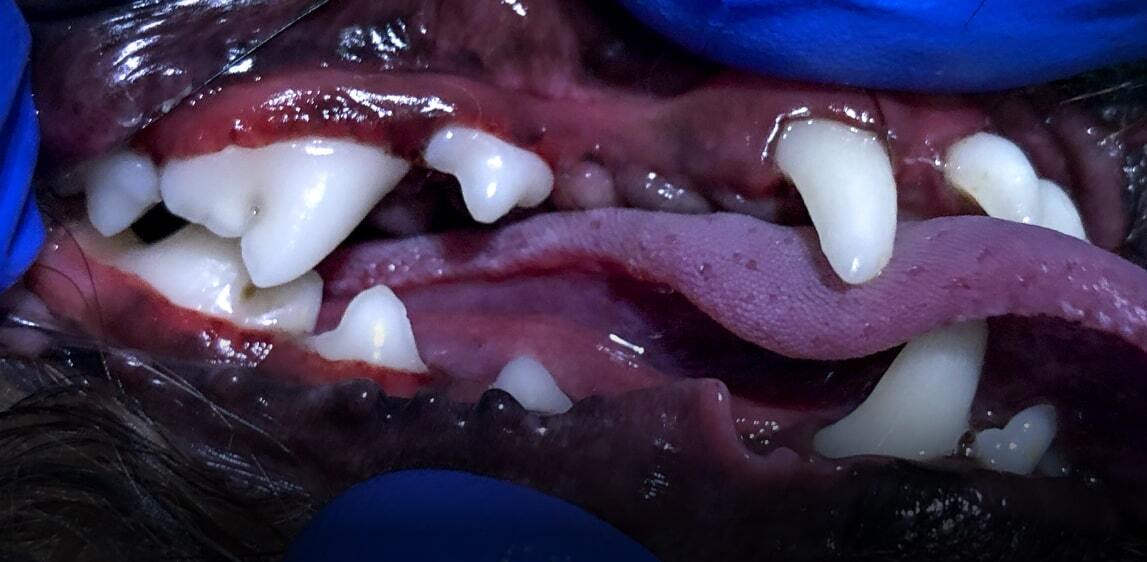 After
After
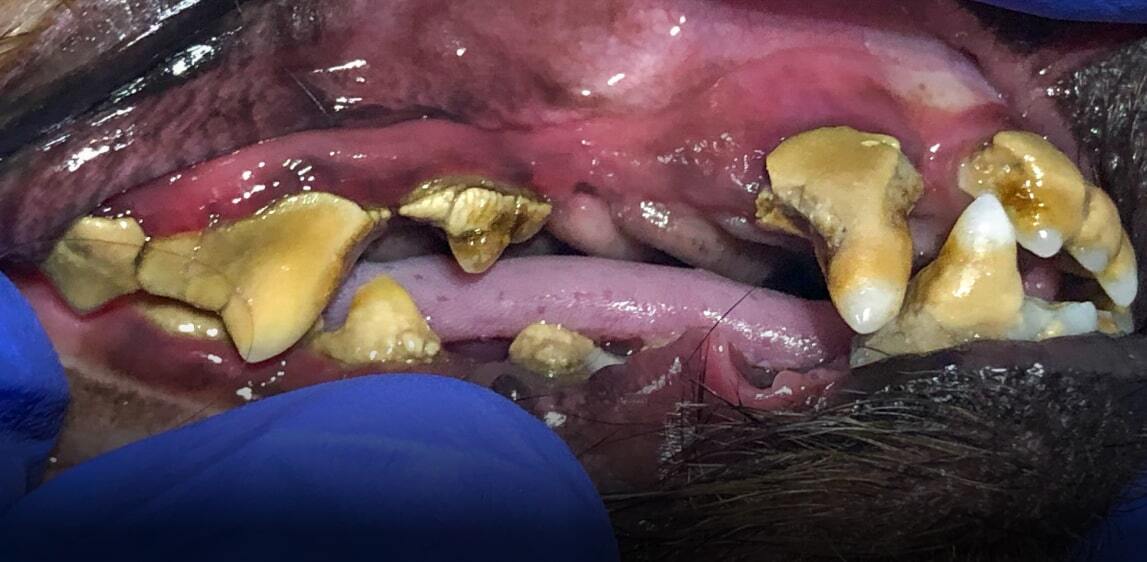
Before
This non-anesthetic dental helped prevent periodontitis in a dog we helped out. This case is an example of how we can help pets before periodontal disease sets in.
What does gum disease look like in cats?
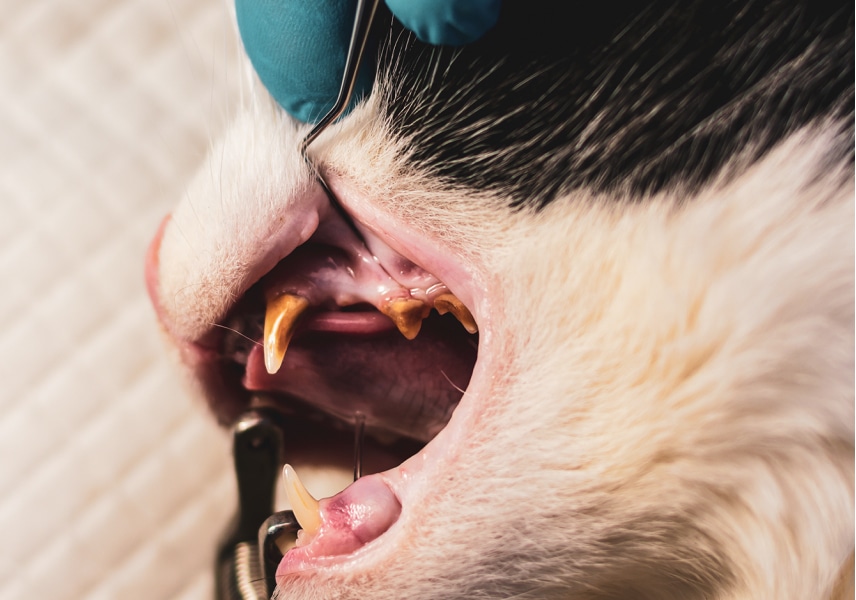
Cats can hide symptoms of dental disease for months or even years. Sometimes owners that did not realize their cats had dental disease cannot believe the change for the better after a dental procedure. For cats especially, it is very important they have regular oral exams by your vet.
Focusing on preventing advanced periodontal disease in your pets is extremely important. Our pets need regular dental cleanings and their teeth should be brushed daily! Always offer safe toys and dental treats for daily chewing too. We recommend these 5 dental treats for cats and these 6 dental treats for dogs.







